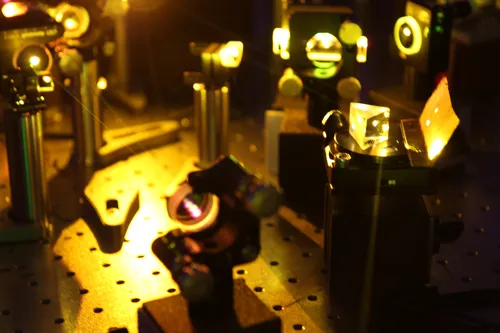
Transient absorption (TA) is a powerful method, yet with potentially complicated signals. These complications arise from overlapping signal contributions. For example, absorption from the first excited state to the higher excited state may overlap with stimulated emission. We overcome this problem by probing in the near-infrared region of the spectrum (NIR, 1100-2000 nm). With visible/UV pump, NIR probe experiments, we achieve the following:
- Contributions attributed to the absorption and fluorescence are minimised by NIR-probing, revealing pure excited state absorption of photocatalytically active states.
- We optimise the signal-to-noise ratio by so-called rapid scan detection and monitoring of pump intensity fluctuations.
Involved group members

Miriam Jänchen
miriam.jaenchen@tum.de

Kiran Maiti
kiran.maiti@tum.de
Further reading
Zigmantas, D.; Polivka, T.; Hiller, R. G.; Yartsev, A.; Sundstrom, V. Spectroscopic and dynamic properties of the peridinin lowest singlet excited states. J. Phys. Chem. A 2001, 105 (45), 10296-10306, DOI: 10.1021/jp010022n
Zigmantas, D.; Hiller, R. G.; Sundstrom, V.; Polivka, T. Carotenoid to chlorophyll energy transfer in the peridinin-chlorophyll-a-protein complex involves an intramolecular charge transfer state. Proc. Natl. Acad. Sci. U.S.A. 2002, 99 (26), 16760-16765. DOI: 10.1073/pnas.262537599.
